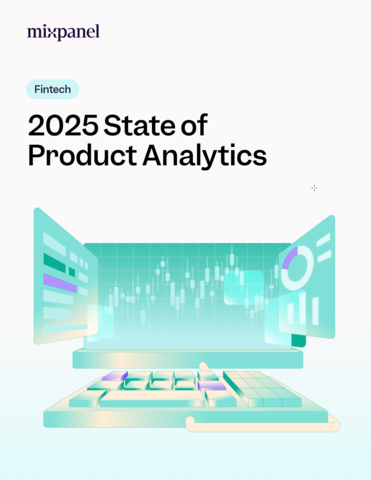Digital identity in retail banking

Digital transformation is at the heart of most business strategies. Within the retail banking sector, digital identity has emerged as a cornerstone of change. Banks are rapidly adapting to the evolving demands of customers who expect secure, convenient and personalised banking experiences. Digital identity (DI) technology enables this, redefining how customers interact with financial institutions, while at the same time reshaping the way banks can operate.
Digital identity
Digital identity involves data that uniquely identifies an individual person who is online. Credentials can include biometric identifiers such as fingerprints or facial recognition, as well as digital records such as login details, mobile numbers and previous transactions.
These credentials are particularly important for retail banks, where DI can serve as a gateway to authenticate customers, prevent fraud and provide tailored services. Digital identity is, or at least can be, highly secure: customers and their money are kept safe, while banks are enabled to comply with ever-more stringent compliance requirements and regulatory frameworks. At the same time the use of digital technology can simplify complex processes such as onboarding and risk evaluation.
The impact on retail banking
Streamlining onboarding. Opening a new bank account used to be a complicated and frustrating affair, especially for certain groups of people such as the homeless and immigrants. Traditional banking required in-person verification and physical documentation with proof of address and proof of identity for opening accounts.
With DI technology, remote onboarding through secure apps and websites becomes possible. Biometric authentication can be bolstered by techniques that ensure a real person (rather than a photo or video) is in front of the camera. Document scanning technologies can be strengthened by highly detailed analysis that can detect counterfeit documents faster and more accurately than humans. Overall, the use of DI significantly reduces the time and cost of acquiring new customers, while ensuring those customers are kept happy, or at least less frustrated, during this process.
Personalised customer experiences. Banks can use digital identity data to gain deeper insights into customer preferences and patterns of behaviour. Understanding how to deliver exceptional customer experience (CE) is a key strategy for any organisation hoping to sell goods or services: retail banks are no exception here. Insights derived in part from digital identity allow them to deliver highly personalised services, such as tailored loans, competitive insurance deals and offers, and financial advice based on analysis of spending and income patterns.
Inclusivity and accessibility. A major issue for banks, and increasingly a regulatory requirement, is how to bring unbanked and underbanked people into the financial system. These populations are far higher in number than many realise: in the UK there are over a million people without a bank account, while those who are underbanked, with limited access to credit and loans, may number as many as six million.
Digital technology such as smartphones can enable individuals without formal documentation to access basic banking services, fostering financial inclusion. However, DI solutions do require access to digital technology, and many UK citizens consider themselves digitally excluded. It is therefore important that retail banks do not consider DI technology a magic bullet for overcoming exclusion issues.
Enhanced security. Fraud remains a significant challenge for retail banks. Digital identity systems, powered by artificial intelligence and machine learning, are excellent at detecting suspicious activities in real time.
And while it is generally appropriate to involve a human in the process of identifying fraud, the AI systems used are usually faster and more accurate than humans and better able to detect patterns that might indicate risk. Humans need only be there to identify instances where the AI has clearly made an error or to contest an AI-generated decision.
In addition, techniques such as multi-factor authentication (MFA) and biometric verification, which can be easily applied to online processes, make it harder for bad actors to compromise accounts.
Transforming payments with DI
Digital identity is having a particularly significant effect on one area of banking: that of payments. The technology is enabling seamless and efficient experiences for consumers, while optimising process efficiency and costs for banks.
With DI, payment systems can authenticate users instantly, eliminating the need for often insecure passwords and PINs. At the same time the manual input of payment details, the source of many payment errors, can be avoided. Payments can be made even more secure through the use of tokenisation, where sensitive payment information (such as bank card details) is replaced with unique identifiers or “tokens”. Sensitive payment data is not exposed during transactions, reducing the risk of fraud and theft.
Cross-border payments are also facilitated through DI technology, which can simplify the processes for making cross-border payments. These have traditionally been slow and expensive, but by verifying the identities of both parties quickly and securely using DI, the delays and costs associated with international money transfers are substantially reduced.
Another area where DI enhances payments processes is the use of digital wallets. These wallets, such as Apple Pay, Google Pay and PayPal, are generally built around highly robust DI technology and provide highly convenient and unified platforms for consumers to manage their finances.
Challenges and opportunities
While the benefits of digital identity in retail banking are undeniable, there are challenges associated with the collection and storage of personal identity data.
These challenges include data privacy concerns. As banks collect the sensitive personal information used by DI, using this data appropriately, and always with the customer’s consent, becomes essential. It is only with strong data governance that banks will be able to comply with respecting privacy laws such as the UK’s GDPR.
In the same way, banks need to ensure that they are keeping personal data secure. Customers are often a weak link in cyber-security chains and banks need to ensure that the systems they develop are both intuitive to use (so they are hard to get wrong) and convenient to use (so that customers don’t try to find workarounds). Sophisticated cyber-attacks targeting digital identity systems are not only designed to break into bank accounts: identity data is very valuable in its own right and capable of being sold to third parties for considerable sums. Banks that prevent hackers from stealing money from their customers have only done half the job: it will be just as important to prevent hackers from stealing the personal data used in building digital identities.
Digital identity will inevitably be at the heart of retail banking in the future. Emerging technologies such as blockchain and decentralised identity systems are only promoting DI further. Banks will benefit by lowering transaction costs while reducing the likelihood and impact of fraud and theft, and gaining traction. Consumers will have easier access to banking services, greater control over their data and simpler access to their money.
Investment in digital identity is neither simple nor inexpensive. But increasingly there are third-party services aimed at retail banks that can defray costs across several organisations. At the same time, the technology – often driven by AI – is becoming faster, cheaper to run and more accurate. Institutions that successfully integrate digital identity will not only safeguard their customers but also differentiate themselves in an increasingly competitive market.

Jeremy Swinfen-Green
Most Viewed
Winston House, 3rd Floor, Units 306-309, 2-4 Dollis Park, London, N3 1HF
23-29 Hendon Lane, London, N3 1RT
020 8349 4363
© 2025, Lyonsdown Limited. Business Reporter® is a registered trademark of Lyonsdown Ltd. VAT registration number: 830519543





